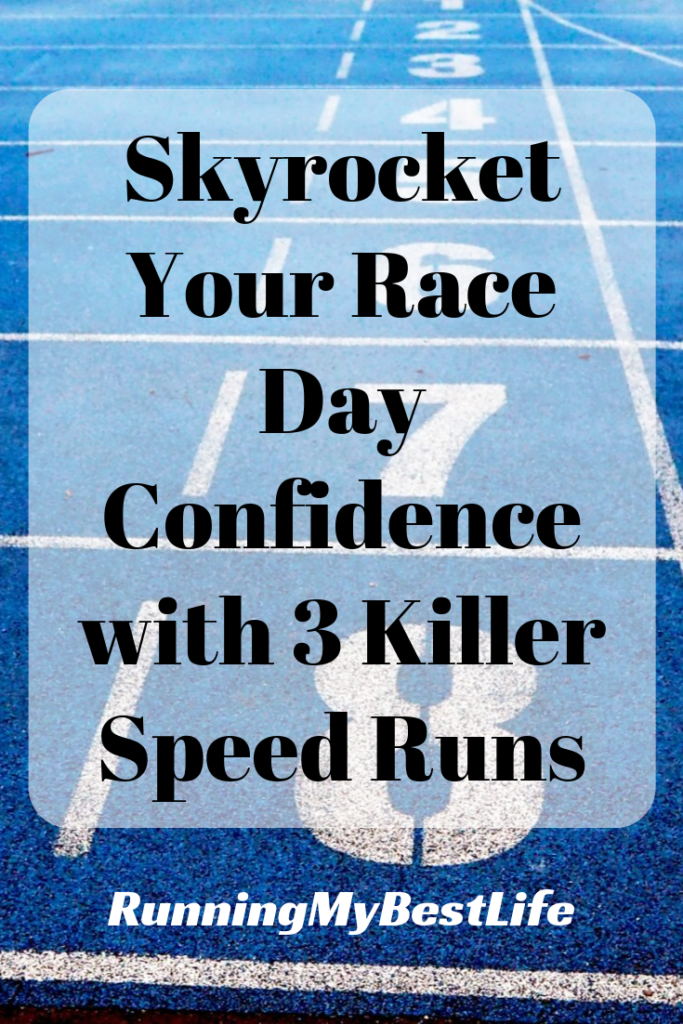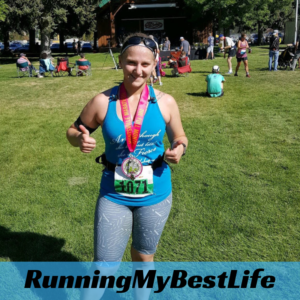If you’re training for a race, it’s likely that speed workouts are part of your training plan once if not twice each week. Speed workouts are great because they enable you to push your fitness to the next level, they condition your legs to move quicker, and they improve your ability to tolerate discomfort.
Training some of your speed workouts at your goal race pace will help boost your confidence that you’ll hit your goal pace on race day.
Benefits of Speed Workouts
- Improved running form
- Run faster with less effort (increased running economy)
- Hard speed workouts are highly satisfactory and give you a mental edge
- Familiarize yourself with your goal race pace and effort level
- Improve your ability to tolerate discomfort
- Increases your stamina
- Increases your mitochondria size and efficiency of energy use
Ultimately, speed workouts lead to faster races because you are able to sustain a faster pace over a longer distance. Last weekend, I ran a 5k Personal Record of 1 minute and 40 seconds by incorporating strength training, tempo runs, and track repeats into my training schedule!
If you’re familiar with this blog, you’ve probably heard me advocate for 80/20 Running, which means you need to run 80% of your weekly miles at a slow, easy pace to build your fitness. These speed workouts are for the other 20% of your miles where you focus on building power, leg turnover, and speed!

3 Speed Workouts to Train for Faster Race Times
These three types of speed workouts are the building blocks for faster race times. The power of a well-executed speed workout should not be overlooked. Learn how to execute each one properly, and fit them into your running schedule when it works for you, not overlooking the 80/20 Running Principle.
Tempo Runs
Speed training via tempo runs are one of the optimal ways to improve your VO2 max, which determines your ability to sustain long workouts at a hard pace.
Tempo runs start at an easy pace. Starting at this easy way is a great place to ensure you are warmed up for the faster portion of your workout.
After the first 10-15 minutes, you gradually increase your speed, peaking around 2/3 of the time in your workout. Following your peak, you gradually decrease your speed and finish your workout with another 10-15 minutes of easy running.
For a 30 minute tempo workout, it might look something like this:
- 0-5 minutes: Slow and easy
- 5-15 minutes: Start gradually increasing speed.
- 15-20 minutes: This should be the toughest/fastest part of your workout.
- 20-30 minutes: Gradually decrease your speed, finish at a slow and easy cool down pace.
If you have a hart time gauging your speed during tempo runs, I highly recommend grabbing a Garmin Forerunner 35. It’s a relatively inexpensive running watch that can give you a constant readout of your current pace!

Fartlek Runs
Fartlek is a Swedish word for “Speed Play.” Fartlek runs are supposed to be unstructured, fun speed workouts. They can be a great option if you’re a go-with-the-flow type of person and like to push yourself.
Fartlek runs are best performed outside or on a trail. You might choose landmarks to run fast between, such as “I’m going to sprint to the next tree, or the next stoplight.”
After a fun, hard sprint, you can do a slow recovery jog until you feel ready to go again. The awesome part about fartleks is—you don’t need to have a plan when you start. You can just have a vague idea about how many miles you want to complete or how much time you want to spend running.
[convertkit form=878335]
Track Repeats
Track workouts are my favorite!
I’m a girl who likes some serious structure in her life, so I love track workouts because they provide clear start and end points I can look forward to AND they help me get faster.
Track repetitions (also known as repeats) are perfect for training your body to run faster. They’re also effective at training you to feel your race pace effort.
During a repeat workout, you should first warm-up for a few laps to a full mile while running at a slow, easy effort. When you start the repeat portion of your workout, you will complete each repetition against the clock. I love using my Garmin Forerunner 35 to track my intervals for me!
In between each repetition or “set,” you will walk or slowly jog long enough for your heart rate to recover.
These repetitions could be 200 meters, 400 meters, 800 meters, or even 1600 meters. I love using 200, 400, and 800 meter repeats when I’m getting ready to run my annual physical fitness test. For longer runs like a half marathon, I focus on 800 meter and 1600 meter repeats.
Here are some examples of different repeat workouts:
- 10 sets x 200m @ 1.5 mile run pace
- 8 sets x 400m @ 5k pace
- 4 sets x 800m @ 10k pace
- 3 sets x 1600m @ Half Marathon pace
Many training plans prescribe a specific number of repetitions and distance, while increasing either the number of repetitions or distance (or both) as the weeks progress to improve your fitness level and get you primed for a new personal record on race day.
What is your favorite speed workout?

Run Happy,
Alexis
- Nailing Your Marathon Hydration Strategy: A Comprehensive Guide
- Conquering Marathons in the Cold: A Comprehensive Guide
- Harnessing the Power of Technology for Successful Marathon Training
- Mastering the Marathon: The Ultimate Guide to Nutrition and Training
- Ultimate Guide to the Top 5 Running Shoes for Beginners in 2023
About Me: I’m Alexis, Founder of RunningMyBestLife! I am an avid recreational runner, half marathoner, wife, dog mom, busy professional, downhill skier in Northern Utah. My mission is to help new enthusiasts fall in love with the sport of running. I believe that running is a catalyst to taking control of your life and living your best life by design. Learn More –>